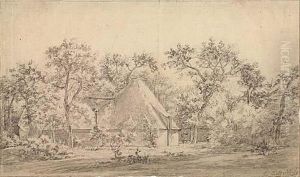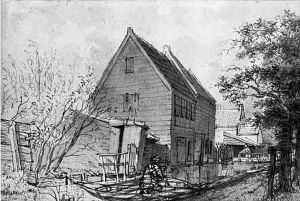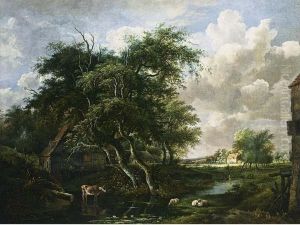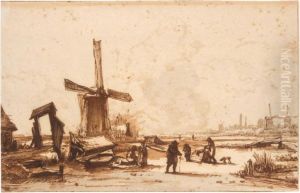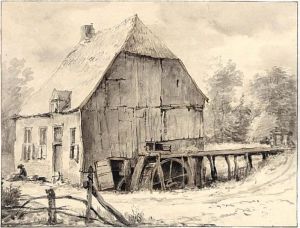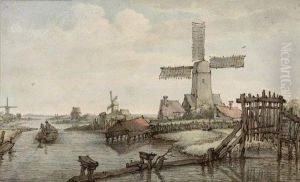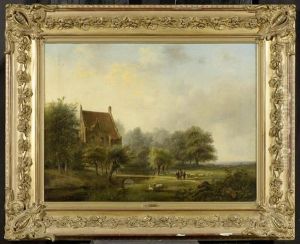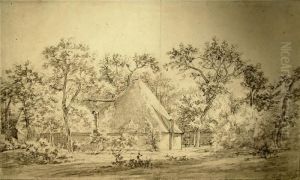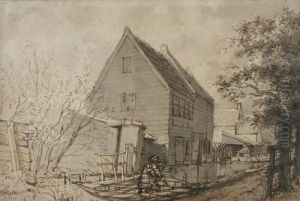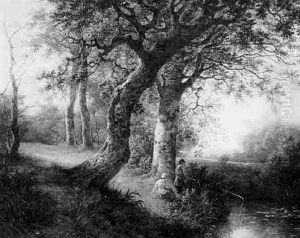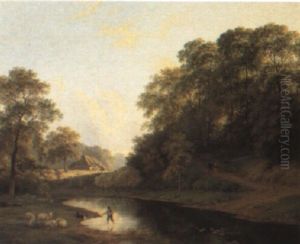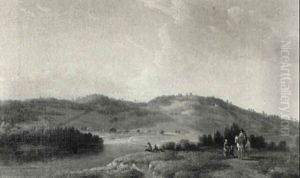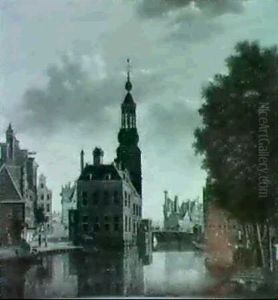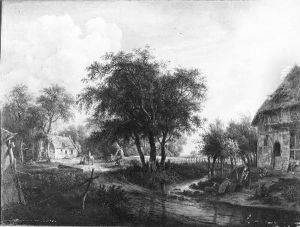Jan Hulswit Paintings
Jan Hulswit was a Dutch painter, etcher, and draftsman, recognized for his landscapes and cityscapes characterized by a fine attention to detail and a masterful handling of light and shade. Born in Amsterdam on October 29, 1766, Hulswit initially trained under his father, who was an amateur artist. He further honed his skills studying under the landscape painter Hendrik Meyer, and later, he worked in the studio of the renowned Dutch artist Jurriaan Andriessen.
In the early stages of his career, Hulswit was heavily influenced by the 17th-century Dutch landscape tradition, often reflecting the serene and pastoral qualities of the Dutch countryside in his works. His etchings and drawings also displayed a meticulousness that was well-received during his time, contributing to his reputation as a skilled craftsman in the depiction of natural and urban environments.
Hulswit's career spanned the late 18th and early 19th centuries, a period that saw significant political and social changes in the Netherlands, including the Batavian Revolution and the subsequent establishment of the Batavian Republic. These events indirectly shaped the artistic landscape of the country, with a shift towards more nationalistic themes. However, Hulswit largely remained focused on his landscapes, occasionally producing works that depicted contemporary historical events or celebrations.
Despite an active career, Hulswit did not gain the same level of fame as some of his contemporaries. Nevertheless, he was able to make a modest living from his art, selling his works to local collectors and patrons. After his death in Amsterdam on November 4, 1822, Hulswit left behind an oeuvre that was appreciated for its craftsmanship and contribution to Dutch landscape art, although it would be overshadowed by the later, more celebrated movements such as the Hague School and, subsequently, Impressionism.
Today, Jan Hulswit's works can be found in various art collections, including those of Dutch museums, and they continue to be of interest to scholars studying the late 18th and early 19th-century Dutch art. His legacy lives on as a testament to the enduring appeal of the Dutch landscape tradition and its influence on the generations of artists that followed.
